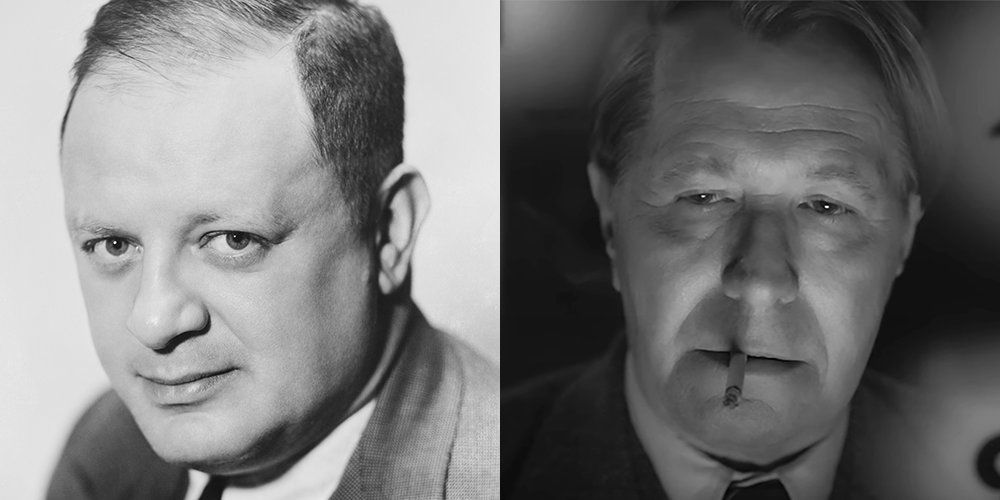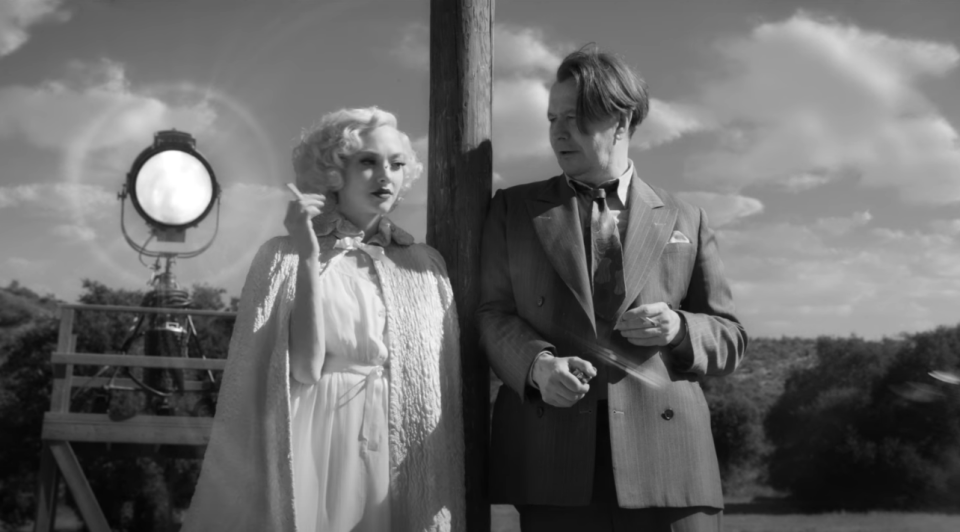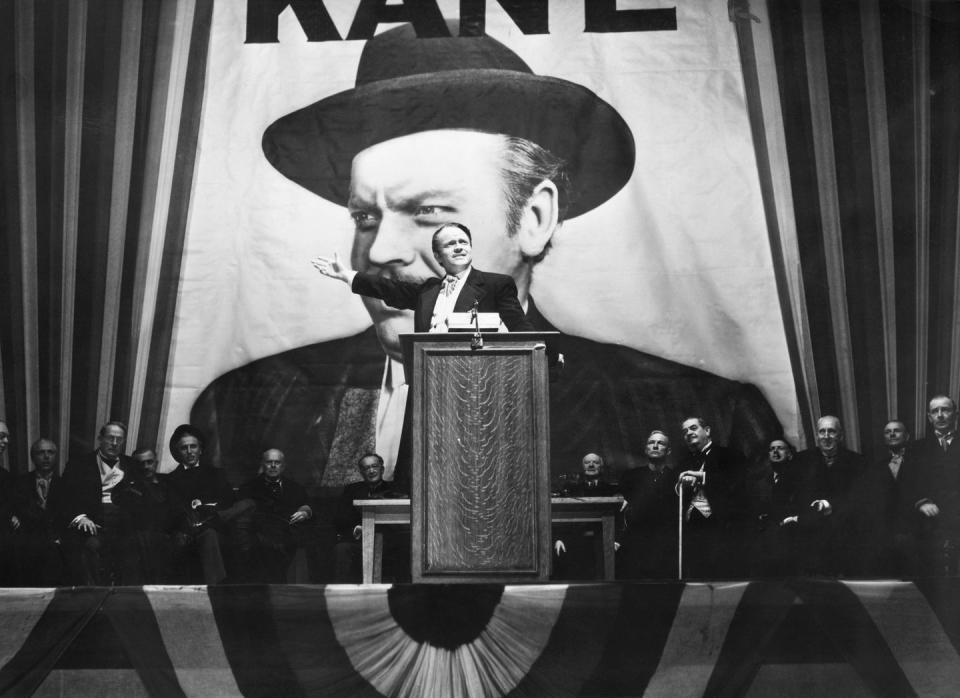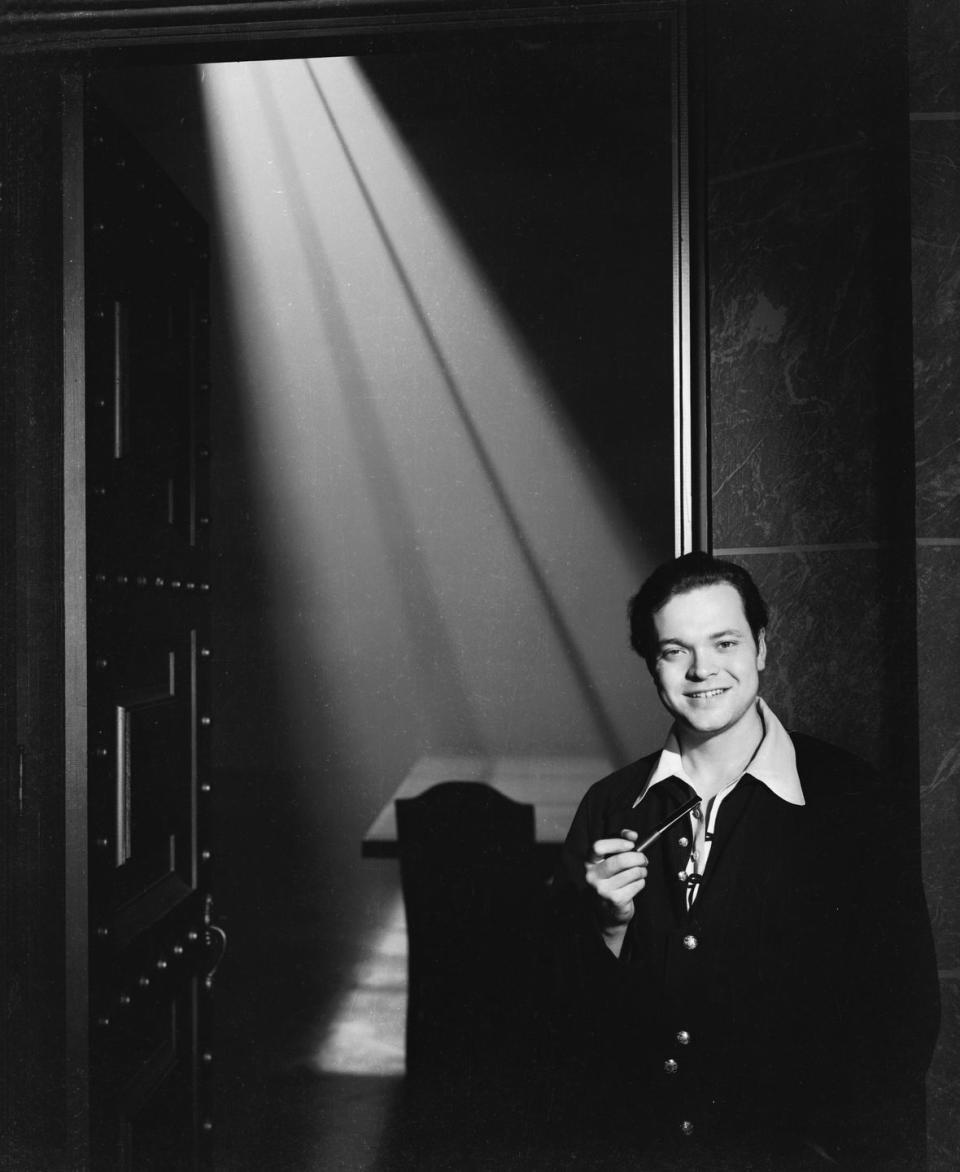Who Was Herman J. Mankiewicz in 'Mank'? And Did He Actually Write 'Citizen Kane'?

- Oops!Something went wrong.Please try again later.
- Oops!Something went wrong.Please try again later.
- Oops!Something went wrong.Please try again later.
Gary Oldman’s star turn in the new Netflix film Mank culminates in a scene where a highly inebriated Herman J. Mankiewicz berates the powerful overlords who control his career in a slurring but rousing speech, which he punctuates by vomiting on the floor.
Look, we’ve all been there; an out-of-control work party where you end up collaring the boss. But the writer Mankiewicz - also known as Mank - was a real-life Hollywood talent, fighting his disillusion for his industry and for the right to have ownership of his creative work. Perhaps it just might have been an idea to go easier on the whiskey.
The story of Mank - directed by David Fincher - is told from the perspective of Mankiewicz, a former journalist turned movie screenwriter, who correctly deduced that after writing the script for 1941’s Citizen Kane, his work would be overshadowed by the film’s director, producer and actor, Orson Welles. He was eventually given a co-credit as joint writer of the Oscar-winning film, but it wasn’t without a fight, and the mystery of who actually wrote Citizen Kane, Mank or Welles, has been hotly contested ever since.

Who was Mank?
Mankiewicz was born in New York in 1897 and he swiftly ascended the literary ranks after writing for The New York Times, Vanity Fair and The New Yorker. It was his “gifted and prodigious” skill with words that got him noticed by Algonquin Round Table, a members club of raconteurs, writers, critics and actors that included Noel Coward and Dorothy Parker, who met every lunchtime at the Algonquin Hotel in New York to exchange witticisms. Certainly puts popping out for a cheddar and pickle baguette from Pret in the shade.
Rubbing shoulders with these movers and shakers is what led Mankiewicz to be headhunted for the thriving film industry in Hollywood. In 1927, he was promoted to head of scenario department at Paramount, which, just like in Mank, he telegraphed a friend: “Millions are to be grabbed out here and your only competition is idiots. Don't let this get around." He then did what any other person would do and assembled a crew of his greatest associates and set them up with cushty writing jobs alongside him at Paramount.
He was a prolific writer, famed for his sparkling dialogue and punchy, no-holds-barred chat. The film critic Pauline Kael in 1994’s For Keeps wrote: “His heroes weren't soft-eyed and bucolic; he brought good-humoured toughness to the movies, and energy and astringency”, while in 1984, Don Kilbourne in the Dictionary of Literary Biography noted the impact Mankiewicz had on creating a new genre: “Occasional flashes of the Mankiewicz humor and satire that proved to be a foreshadowing of a new type of slick, satirical, typically American film that depended almost totally on dialogue for its success”.
Mank racked up credits on almost 95 films in his career, and worked on some of the biggest movies of the era, including Gentlemen Prefer Blondes, It’s a Wonderful World and Monkey Business. He wrote or “doctored” the screenplays for many of them too, but was often uncredited as the writer, and simply named executive producer, which rankled him.
In 1938, he worked on The Wizard Of Oz, writing a significant amount of the script - he reportedly came up with the idea of turning the action from black and white to full colour when Dorothy and Toto arrive in Oz - but again, was uncredited when the end of the film rolled around.

Frustrated by being unrecognised in his prolific work
Again and again, as he found in the Hollywood studio system - that industry that gave the studio bosses complete control over their employees and treated them as commodities - his work was being undervalued and he had no ownership of it. Perhaps it was the allure of moving in glamorous circles that kept him, like many others, hooked on Hollywood.
In the film, Mank is often seen acting as “the court jester” at lavish parties held during the Great Depression, as his scathing wit amuses the media magnate, William Randolph Hearst, and one of the head honchos of MGM, Louis B. Mayer. In reality this was also the case too, although as this piece in Slate notes, “his drinking slowly made him a persona non-grata”. Especially if he’d taken to throwing up his meals; something that didn’t happen in the Hearst Castle, but did happen at a dinner party thrown by producer Arthur Hornblow Jr.. Ever the comedian, even when paralytically drunk, Mank really did quip: “Don’t worry, the white wine came up with the fish.” Think a few people might end up using that one this Christmas.
By the time he was 42, Mank was struggling with his own demons and severely jaded with Hollywood. He was a heavy gambler and was dealing with an alcohol addiction. But in a chance meeting in 1939 with Orson Welles in hospital after Mank was in a car crash, Welles persuaded him to start writing for his radio show, The Mercury Players. The pair got on well, and decided to write a screenplay on the life of a not-so-fictional media mogul, that for anyone with a pair of eyes could see was based on William Randolph Hearst. Mank had been slyly observing Hearst’s lifestyle and life stories over the years and wanted to satirise them - Hearst didn’t take kindly to this “fictionalised” depiction and pulled any advertising or reviews for the film from his wealth of newspapers and magazines.
In Mank, we see the writer holed up in a Californian ranch by Welles, and given 90 days to dry out while penning the story, which checks out as how the screenplay was written in real life. But when Citizen Kane was eventually released in 1941, it was billed as Welles being “a one-man band; directing, acting and writing”. Understandably, Mank was apoplectic at being white-washed out of his own work - which he regarded as the best in his career.

The row over who wrote Citizen Kane
There was only one place to take the beef: the Screen Actors Guild. Mank declared he was the original author of the screenplay, while Welles claimed he planned on a joint credit all along. Mank countered that Welles had offered him $10,000 to let him take full credit, but with all the “he said...no, he said” the SAG played mum and told them to share, that they would both have joint credit on the film. Mank must have smirked when it was announced that his name would run first, presumably thanks to alphabetic order. (Although Welles's assistant, Richard Wilson, insisted that it was the director that made that decision.)
The passing of time meant that Mank’s name became a footnote of the film, with all the focus back on Welles. But in 1971, the critic Pauline Kael attempted to redress the balance and put forward the theory in her essay Raising Kane that Mank had in fact been responsible for the entire screenplay, and painted Welles as piggybacking on the script. Rita Alexander - Mank’s assistant, played by Lily Collins in Mank - told Kael: “Welles didn’t write (or dictate) one line of the shooting script of Citizen Kane”.
This was then disputed by the director Peter Bogdanovich in his article for Esquire, The Kane Mutiny, and Welles was quoted in it as saying that there were two drafts: “So, after mutual agreements on the storyline and character, Mank went off with Houseman and did his version, while I stayed in Hollywood and wrote mine. At the end, naturally, I was the one who was making the picture, after all—who had to make the decisions. I used what I wanted of Mank’s and, rightly or wrongly, kept what I liked of my own.”
Adding fuel to the 50-year-old fire, in 2016, The Smithsonian Magazine noted: “Analysing two overlooked copies of a Kane “corrections script” unearthed in the archives at the Museum of Modern Art in New York City and the University of Michigan, the journalist-turned-historian Harlan Lebo found that Welles revised the script extensively, even crafting pivotal scenes from scratch.”
While we’re never going to know the exact split percentages of the writing credits, it does bring up the debate of the importance of artist control and intellectual property of ideas. It’s still a shady situation for artists in 2020, and unlike in 1941, we have read receipts, but it still leads to ugly and lengthy legal cases.
The Mankiewicz family legacy
Despite the fall out, Citizen Kane went on to win an Oscar for Best Screenplay, and Mank worked on a further 12 films, including The Pride of Saint Louis, before his death at 55 in 1953. He was survived by his brother Joseph Mankiewicz, also a writer and director, and a multi Oscar-winning star behind films like Cleopatra, All About Eve and Julius Caesar. And the Mankiewicz name is still an important part of Hollywood - and Washington D.C - today. Mank’s son, Frank, went on to become the press secretary for Robert F. Kennedy, while Joseph’s son Tom wrote for the Bond franchise on films such as Diamonds Are Forever and Live and Let Die.
Mank was once dubbed “the funniest man in New York” by one of his friends, and at one point, whether the general public was aware of it or not, his scripted wit arguably made him also the funniest man in America.
Mank is out now on Netflix
Like this article? Sign up to our newsletter to get more articles like this delivered straight to your inbox
Need some positivity right now? Subscribe to Esquire now for a hit of style, fitness, culture and advice from the experts
You Might Also Like

